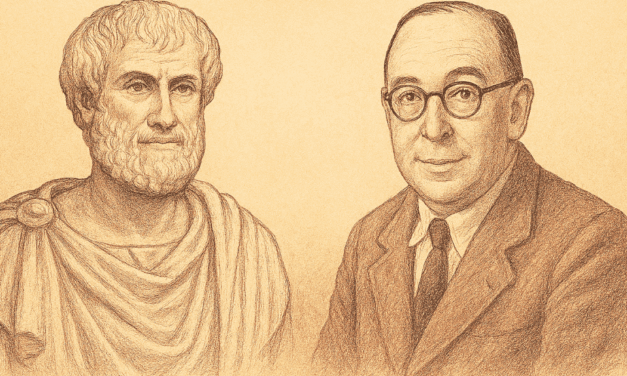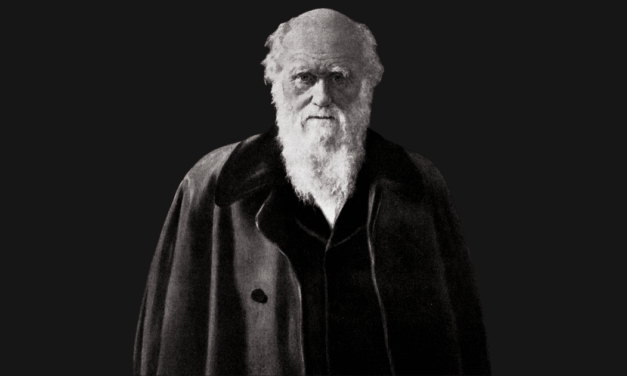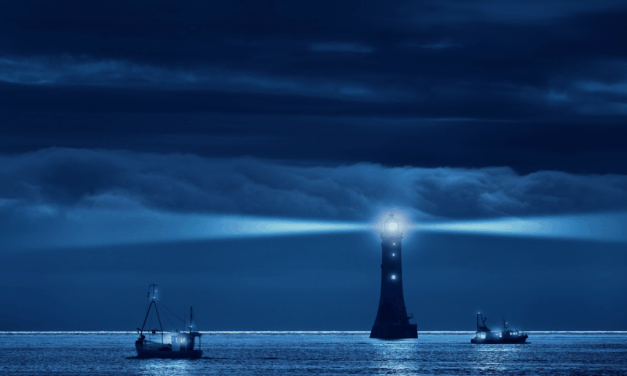Listen to this article (27:05 min)
This article was published exclusively online in the Christian Research Journal, Volume 48, number 03 (2025).
When you support the Journal, you join the team and help provide the resources at equip.org that minister to people worldwide. These resources include our ever-growing database of more than 2,500 articles and Bible Answers, as well as our free Postmodern Realities podcast.
Another way you can support our online articles is by leaving us a tip. A tip is just a small amount, like $3, $5, or $10, which is the cost of a latte, lunch out, or coffee drink. To leave a tip, click here.
Miracles in the Bible present an explanatory challenge for judicious readers in a scientifically informed age. For the Christian who believes the Bible to be the true Word of God, events recorded in Scripture are usually considered to be miraculous if they defy modern scientific explanation. For the skeptic or agnostic who may be open to considering the claims of Christianity, exceptions to the predicted course of nature may seem to call into question the historicity of the biblical accounts. For the committed atheist, biblical miracles and those who believe them are either ignored or are sometimes pointed to as targets of ridicule.
What are we to make of the account of Jonah? In the Old Testament book bearing his name, we read: “And the LORD appointed a great fish to swallow up Jonah. And Jonah was in the belly of the fish three days and three nights” (Jonah 1:17 ESV). Has modern science disproven this paradigm of the biblically miraculous?
What Is an Atheist to Think?
For the atheist devoted to the belief that there is no God, one might search the depths of all the Earth’s oceans and find no empirical evidence of divine influence. Never mind that three-quarters of the global seafloor has not yet been mapped by high-resolution imaging technology.1 The celebrity biologist Richard Dawkins pokes fun at the story of Jonah and other biblical miracles, calling them “nonsensical”2 or “just plain weird.”3 From the perspective of naturalism, which since Darwin has become the prevailing philosophy of science, the biblical text is implausible because it seems to defy what science teaches is possible. Naturalistic science supposedly has exposed the story of Jonah to the bright light of reason and rescued modern thought from a premodern ocean of ignorance. Science has swallowed superstition — and eliminated it. The most bellicose strands of atheism insist that science expels the supernatural from our minds. Religious believers’ irrationality lies exposed, and Bible-believing Christians should either wake up and accept atheism or else retreat in silence from public discussion. But is atheism consistent with all we know to be true of reality?
What Is a Skeptic to Think?
New Testament scholar, textual critic, and former Christian Bart Ehrman argues that Jonah is a story, not a biography.4 Although not a biologist himself, Ehrman considers it self-evident that “back then…zoological knowledge was…undeveloped.”5 Thus, the writer of Jonah simply did not know that whales’ mouths and bellies are just too small to accommodate a grown man, even if whales had been known to the pastoral people inhabiting the Ancient Near East. The philosopher David Hume expressed his skepticism more bluntly, arguing that the Old Testament is a book “presented to us by a barbarous and ignorant people.”6 The ancients must have thought in primitive ways and, for what they could not explain, they looked naïvely to the supernatural.
Skepticism about biblical miracles has also swayed many Christian thinkers to regard Jonah as nonhistorical and allegorical. Historical theologian Gerald Bray categorizes the Jonah story as “a picture in earthly terms of what is essentially a spiritual and heavenly reality.”7 New Testament scholar Craig Blomberg questions whether, in accepting the historicity of Jonah preaching repentance to the Ninevites, one must also accept the historicity of Jonah’s whale.8 To the extent that the book might contain traces of history, evangelical author Bob Wilkin observes that “most New Testament scholars today consider these events to be historical in a very limited sense, in ways that fit [the writers’] understanding of science.”9
And then there is the legend of James Bartley, a sailor who allegedly was found, unconscious but alive, within the belly of a sperm whale caught off the coast of the Falkland Islands in 1891.10 This “rescue of a modern Jonah” story found its way into the fundamentalist tradition, including a number of tracts and biblical commentaries, until Edward Davis, a historian of science, debunked it a century later.11 The account, it turned out, was a hoax that was never properly investigated at the time but was of such interest to apologists keen on affirming the historicity of Scripture that they adopted it uncritically. Its refutation put to rest the plausibility of the story of Jonah and, with it, the reliability of the historicity of biblical miracles — or so it might seem.
What Is a Christian to Think?
The faithful Christian may be confident that the account of Jonah is true because all Scripture is trustworthy, having been “breathed out by God” (2 Timothy 3:16 ESV) and is not a matter of “cleverly devised myths” (2 Peter 1:16 ESV). When approaching a biblical text one must first discern the literary genre, whether it be historical narration, poetry, prophecy, or apocalyptic literature.12 The text of Jonah presents itself as historical narrative in recounting that Jonah, having been cast into a tempestuous sea by frightened mariners headed to Tarshish, for three days and three nights lay in the belly of a whale the LORD had prepared to swallow him up (Jonah 1:15–17). The customary hermeneutic, enlightened by scientific skepticism, sets aside the historicity of the narrative while retaining its more important moral and spiritual meaning.
While it is not necessary to accept its historicity to appreciate its symbolic meaning, a plain reading of the text seems to include the possibility that it might also be interpreted literally. Blomberg concedes that “Jonah really intended to recount a miracle that really did happen.”13 If the author of Jonah had known so little zoology as to consider the account an ordinary occurrence, it seems unlikely that he would have thought it worthy of writing down. Theologian R. C. Sproul, in defending biblical inerrancy, argues that to reduce the story of Jonah to its redemptive intent while denying its literal and historical truth is to diminish its objective reality.14
The principle of biblical inerrancy, meaning that Scripture in its entirety is “free from all falsehood, fraud or deceit,”15 does not, as theologian Wayne Grudem points out, mean “absolute scientific precision.”16 The Bible, Grudem adds, “always tells the truth concerning everything it talks about,”17 but it is not meant to be for us a science textbook. Science can, however, serve as a hermeneutical ally in helping to interpret Jonah’s encounter.
In the Gospel of Matthew are words that should give us pause. Jesus Himself refers to Jonah having been “three days and three nights in the whale’s belly; so shall the Son of man be three days and three nights in the heart of the earth” (Matthew 12:40 KJV). Sproul cites Jesus’ words as authoritative in support of a literal interpretation.18 If Jesus were speaking allegorically, that would call into question His own historical death and bodily resurrection, which He foreshadows by referring to Jonah. To deny the literal resurrection of Jesus would be utterly unacceptable to the Christian. As Paul writes in his letter to the church in Corinth, “if there is no resurrection of the dead, then not even Christ has been raised. And if Christ has not been raised, our preaching is in vain and your faith is in vain” (1 Corinthians 15:13–14 ESV).
What Is a Scientist to Think?
The problem with miracles, such as one finds in the book of Jonah, is that they are exceptions to common human experience and incompatible with what we understand about the world through science. Obviously, we do not see whales going around swallowing swimmers, let alone those swimmers later emerging from their bellies to tell about it. We do not think of whales as inhabiting the waters of the Ancient Near East. On the face of it, it seems unreasonable to believe that an ancient writer on land would have specific knowledge about sea creatures, or that a man could fit inside the mouth of a fish, escape its teeth, breathe air, and survive its digestive secretions. The reasons to doubt the story of Jonah seem to line up squarely — or do they?
When science and the Bible seem to be in conflict, the intellectually rigorous thinker will take a step back and examine how each is being interpreted. Science is an ongoing process of discovery that is always incomplete. It investigates nature to uncover new knowledge, and when new facts are established, revised theories sometimes overturn older theories. Biblical interpretation by fallen humans, likewise, is flawed, for “we see through a glass, darkly” (1 Corinthians 13:12 KJV).
I submit that the most excellent way to interpret the book of Jonah is through a concordist approach, which is to reconcile scientific and biblical interpretations while respecting the integrity of both. According to the “two books” doctrine of the Protestant Reformation, God reveals Himself both through His Word as recorded in the Bible and in the natural realm, the book of nature.19 Article 2 of the 1561 Belgic Confession states that “We know God by two means: First, by the creation, preservation, and government of the universe, since that universe is before our eyes like a beautiful book in which all creatures, great and small, are as letters to make us ponder the invisible things of God.…Second, God makes himself known to us more clearly by His holy and divine Word.”20 Allowing science to serve as a hermeneutical ally to the biblical text, we may ask whether examination of the latest scientific evidence might recover a literal interpretation of Jonah and the whale.
What Can Science Contribute?
The first question to address is what species of sea creature swallowed Jonah. In the Masoretic Text, the Hebrew phrase for the creature is dag gadol, meaning simply “big fish,” as it is rendered in all major English translations (Jonah 1:17). The Greek Septuagint also translates the Hebrew as kētei megalōi or “big fish.” Similarly, in the Greek New Testament, Jesus says that Jonah was in the belly of the kētous (Matthew 12:40), which can refer to any large sea creature. This is the word that is translated as “whale” in the King James Version, the Tyndale Bible of 1526, the Geneva Bible of 1560, and the English Standard Version, among others. So, are there even whales to be found in the Mediterranean Sea?
Awareness that the commercial whaling industry has substantially reduced the numbers of whales worldwide has increased interest in zoological research into these endangered species. Whale populations now are but a small fraction of what they were prior to the 20th century. The most probable species encountered by Jonah was the fin whale. This is the second-largest whale species on the planet, measuring up to 22 meters in length and weighing 40–50 tons.21 It happens to be the most common whale to inhabit the Mediterranean Sea.22 Historical evidence shows that ancient mariners in the North Atlantic and North Pacific were familiar with whales, which were hunted as early as 4,000 years ago,23 although it is doubtful that Ancient Near Eastern seafarers would have had contact with North Atlantic mariners in pre-Roman times. Significantly, Jonah writes that “The waters closed in over me” and “weeds were wrapped about my head” (Jonah 2:5 ESV), but he mentions no lacerations or bleeding, which would be consistent with entering the mouth of a fin whale, as it lacks teeth.
Properly interpreted, science is not an adversary to biblical interpretation. Rather, it can be helpful in resolving difficulties when the veracity of the text is in question. Whereas skeptics assume that a man would not fit within the mouth or belly of a whale, field measurements indicate otherwise. The cross-sectional area of a fin whale’s mouth is determined by the dimensions of its skull and jaw which, when open, reaches 8 m2,24 which compares gapingly to the 2.2 m2 of a standard residential door. Further, the pleated walls of its buccal cavity are highly distensible, so that when the whale lunges to feed, it takes in an enormous volume of sea water.25 This lunge-feeding behavior was not well-studied until the 1980s.26 Goldbogen and his zoologist colleagues write that fin whales “lunge with their mouth fully agape, thereby generating dynamic pressure to stretch their mouth around a large volume of prey-laden water….Expansion of the buccal cavity enables an adult fin whale to engulf approximately 60–82 m3 of water, a volume greater than its entire body.”27 One can imagine the great influx of seawater when reading Jonah’s words: “and the flood surrounded me; all your waves and your billows passed over me” (Jonah 2:3 ESV). When fully distended, the fin whale’s forestomach (the first compartment of its three-chambered stomach), where no digestive enzymes are secreted, accommodates as much as 500 L of fluid,28 which is two-to-three times the size of a standard bathtub.
Herein lies an insurmountable bottleneck, as the fin whale’s esophagus measures a tight 10 cm (4 inches) in width and has limited ability to stretch,29 making it impossible for a man to be squeezed down its 1.3–1.9 meter length to enter the forestomach. And whereas megaesophagus (a disorder in which the esophagus becomes dilated) can occur in a number of land animals,30 there are no reported cases in fin whales. (As an aside, treatment for the human esophageal disorder achalasia was once insertion of a whalebone down into the esophagus to dilate it.31) I must conclude, therefore, that a historical Jonah would have been confined in the whale’s voluminous oropharynx. During feeding its distension enlarges the whale’s underside, corresponding to the biblical word “belly” (Jonah 1:17, 2:1–2).
Threats to Jonah’s survival would have included the potential for head trauma, as the rush of seawater plunged his body into the whale’s mouth, and hypothermia from prolonged exposure to cold water. Within the whale’s slippery oropharynx, he would have found no firm surface for support or anything to grab onto to steady his position. He would also have been at risk of airway obstruction from aspirated seawater or seaweed.
By far the greatest threat to Jonah’s life would have been an inadequate air supply to sustain him for three days and three nights and avoid asphyxiation. An air pocket might provide enough oxygen to sustain Jonah for a few hours, but the buildup of exhaled carbon dioxide would have overtaken him before he ran out of oxygen. Notably, as the fin whale is an aquatic mammal, it also requires air and surfaces every 5 to 15 minutes to take air in through its blowhole.32 As fin whales’ observed feeding behavior can include skimming at the surface, intake of air along with water could have periodically refreshed Jonah’s air supply.33
Scientific studies of people who have survived being trapped within small pockets of air are limited. The presence of even a small air pocket has been shown to increase the probability of survival after being buried in an avalanche, although survival after being covered in ice for longer than 35 minutes is exceedingly unlikely.34
More germane to the story of Jonah is the account of lobster diver Michael Packard, who in 2021 was swallowed by a humpback whale off the coast of Cape Cod. “I was completely inside; it was completely black,” he told reporters, estimating that his confinement within the whale’s mouth lasted for 30–40 seconds before the whale surfaced and expelled him.35
In an extraordinary report, Harrison Okene was the lone survivor of a tugboat that encountered a rogue wave off the coast of Nigeria in 2013. He was locked in a tiny bathroom the morning the boat capsized. The boat then sank, upside down, landing 30 meters below the surface on the sea floor. Okene found himself trapped in the four-foot room, where for nearly three days he survived by breathing from a pocket of air.36 A diving medicine expert estimated that the 13.5 m3 volume of Okene’s air bubble would have allowed him about 56 hours of life.37
Jonah’s circumstances, if historical, are unique. He surely endured a difficult ordeal.
Is the Jonah Account Miraculous?
Throughout history, people seeking to comprehend the cosmos have sometimes interpreted exceptional events as evidence of miraculous divine intervention. The Oxford literary scholar C. S. Lewis defines the word miracle to mean “an interference with Nature by supernatural power.”38 Philosophical theologian William Lane Craig explains miracles as events “that cannot be explained in terms of the natural causes at the time and place in question.”39 Not all will agree that the story of Jonah is miraculous, and skeptics may discount its historicity, imposing an allegorical hermeneutic. Lewis writes that if one does not accept the prior philosophical assumption that miracles are possible, then “no amount of historical evidence will convince us.”40 Respecting Lewis’s point, the purpose of this essay is not to convince the reader that, in the case of Jonah, a miracle that violated the laws of nature happened. Rather, it is to hold the biblical text up to the scrutiny of science and ask whether, given what is now known, the story might have actually happened as recorded. By considering the most current scientific understanding of whales, it is possible to navigate around the inscrutable question of miracles and propose that the story of Jonah is more plausible scientifically than was previously presumed. This case can be made without the need to posit divine interruption of the laws of nature. Respect for the reliability of the biblical account also is maintained.
The Christian faith rests on miracles recorded in the Bible. The origin of the universe out of nothing, the creation of humankind in God’s image, and the parting of the Red Sea are examples of God’s action to reveal His nature and His redemptive plan. Lewis writes that Christianity is the one religion that could not possibly be “freed from its miraculous elements” without it losing its integrity.41 The Christian story, writes Lewis, “is precisely the story of one grand miracle, the Christian assertion being that what is beyond all space and time, what is uncreated, eternal, came into nature, into human nature, descended into His own universe, and rose again, bringing nature up with Him.”42 The story of Jonah is set within the revelation of this grand miracle.
Paradoxically, the absence of miracles has sometimes been seen as evidence for God. Christians understand that the laws of nature are orderly and uniform in their operations because God, whose nature is to be rational and consistent, has set them into place. Historian of science Cornelius G. Hunter recounts the view that “a nonintervening God is a greater God.”43 According to this perspective, God, in His supreme wisdom, arranged His creation so perfectly that ongoing divine adjustments are unnecessary for Him to accomplish His purposes. The need for corrections, it is argued, would imply a lesser Creator.
Some theists dismiss miracles on scientific grounds. Theologian John Macquarrie writes that “the traditional conception of miracle is irreconcilable with our modern understanding of both science and history.”44 Similarly, physicist and barrister Nicholas Saunders supports a noninterventionist view of history that logically excludes miraculous divine action, since, he writes, God cannot “uphold the laws of nature with one hand, whilst simultaneously overriding them by performing miracles with the other.”45 From this perspective, Jonah is a story in which God is absent.
Another perspective appreciates God’s plentiful hidden miracles. Not all divinely ordained events that appear to us to be miracles require the suspension or violation of natural laws. Theologian and biologist Arthur Peacocke argues that events we regard as miracles actually do not contravene natural laws. Rather, many miracles are what they are “because God intends them to be so, without at any point any contravention of the laws of physics, biology, psychology, sociology, or whatever is the pertinent science for the level of description in question.”46 Saunders, to his credit, offers a nuanced view of divine action in which the laws of nature “incorporate enough flexibility and openness to accommodate the intentional actions of God.”47 In other words, the laws of nature are not rigidly deterministic, and God, who transcends space and time, is able to intervene in His creation in subtle ways, at His sovereign choosing, betwixt and between the ordinary causal streams of matter and energy. Miracles from this perspective happen within plain sight. The story of Jonah might be miraculous in ways undetectable by the scientific method.
All miracles as well as laws of nature, writes theologian William Burt Pope, “are faithful to the character of God.…There can be no a priori reason why He should not interfere with His own laws.”48 Accordingly, theologian Charles Hodge writes that “God in His unlimited sphere has [the laws of nature] always and everywhere under His absolute control, so that, without suspending or violating them, they are ever subservient to His will.” Hodge adds that “It is utterly derogatory to the character of God to assume that He is subject to law, and especially to the laws of matter.”49 This understanding of God as sovereign lawgiver has been a consistent theme throughout Christian history. Augustine, writing in the early fifth century AD, asks, “For how can anything done by the will of God be contrary to nature, when the will of so great a creator constitutes the nature of each created thing? A portent therefore happens not contrary to nature, but contrary to what is known of nature.”50
The richest of all perspectives recognizes the miraculous in everything. Old Testament scholar C. John Collins invites us to consider a broader view of miracles. Rather than looking for evidence of divine action only in extraordinary events, he contends, Christians have reason to expect “God’s activity in every event.”51 Whereas Christians differ on whether the kind of miracles one finds in the Bible still occur, Christians of all traditions agree that God answers prayers.
What Can Reasonably Be Concluded?
These scientific findings render plausible, albeit improbable, the theory that a fin whale could have swallowed Jonah and kept him, uncomfortable yet alive, in its oropharyngeal belly. Whether Jonah was confined for as long as three days and three nights cannot be verified from his own perspective, as he was in complete darkness without any way to measure time. Important aspects of Jonah’s extraordinary watery adventure can, however, be aligned with current scientific facts. The most difficult is access to sufficient air to avoid suffocation, which might be explained if the whale was trapped in shallow seas and swimming continuously at the surface. No miraculous exceptions to the laws of physics need necessarily be invoked.
Reconciling the seeming incompatibility of miracles with natural laws does not always require a choice between the supernatural and science. What is required is humility regarding our own incomplete knowledge and respect for the divine originator of all that science reveals about nature. Nature and nature’s God continue to teach us new things. In these matters, one must take care not to err by setting human reason above God’s wisdom.52
Skeptics will undoubtedly persist, and doubts are to be welcomed, for they ensure healthy debate. Skepticism in this case exemplifies what philosopher Thomas F. Tracy calls “the epistemic burdens associated with miracles.” For those bearing this burden, while “nothing in the sciences entitles us to say that such events cannot occur,” there are certain “evidential hurdles” associated with the very low, but not zero, probability of their occurring by chance.53 Thus, as physicist and theologian Robert John Russell writes, “science can identify necessary but not sufficient conditions” for the unique event.54 Its rarity is recorded historically and measured scientifically; its significance is discerned in its religious context. Without violating the laws of nature, God arranges the improbable to achieve what is humanly impossible. The biblical account is not intended to be representative of the interaction of whales with men afloat but is a unique story about God fulfilling His plan despite the most adverse of circumstances. God is Lord even of the improbable.
The encounter of Jonah with the whale may be what philosopher James Kellenberger calls a “contingency miracle.” These are “extremely rare natural coincidences that, when interpreted in a religious context, have particular religious significance.”55 They signify God’s agency but are not the result of His direct violation of the laws of nature. How God acts through such “coincidences” within the boundaries of the natural laws He has established is a mystery. The Westminster Confession states that “God, in His ordinary providence, maketh use of means, yet is free to work without, above, and against them, at His pleasure.”56
Being swallowed by a whale is a minor miracle. The greater miracles are that the LORD heard Jonah when he cried “out of the belly” (2:2) and, as Jonah was “fainting away” (2:7), preserved his life (2:10). The turbulence of unlikely circumstances did not thwart the LORD’s plan for Jonah. If God arranged the extraordinarily improbable to accomplish His purposes when Jonah disobeyed, how much more might we see His loving hand guiding our affairs if we obey and align our plans with biblical principles? Contemplating such things fills the mind with whale-sized wonder.
William P. Cheshire, M.D. is Professor of Neurology at the Mayo Clinic in Jacksonville, Florida. He holds an A.B. in Biochemical Sciences from Princeton University, an M.D. from West Virginia University, and an M.A. in Bioethics from Trinity International University. Currently, he is pursuing an M.A. in Science and Religion at Biola University.
NOTES
- NOAA, “How Much of the Ocean Has Been Explored?,” accessed May 20, 2025, https://oceanexplorer.noaa.gov/facts/explored.html.
- Richard Dawkins, “Brief Candle in the Dark: My Life in Science,” Who Has Time for This, October 10, 2015, https://whohastimeforthis.blogspot.com/2015/10/brief-candle-in-dark-my-life-in-science.html.
- Richard Dawkins, The God Delusion (Mariner, 2006), 268.
- Bart Ehrman, “The Bible’s Best Known Short Story: Jonah,” blog post, January 1, 2022, https://ehrmanblog.org/the-bibles-best-known-shortstory-jonah.
- Bart Ehrman, “The Bible’s Best Known Short Story: Jonah,” blog post, December 30, 2021, https://ehrmanblog.org/the-bibles-best-known-shortstory-jonah.
- David Hume, Enquiry Concerning Human Understanding (A. Millar, 1748; 2nd ed., Project Gutenberg, 1902), Section X, Part 2, 100, https://www.gutenberg.org/files/9662/9662-h/9662-h.htm.
- Gerald Bray, The Faith We Confess: An Exposition of the Thirty-Nine Articles (The Latimer Trust, 2009), 51.
- Craig L. Blomberg, Can We Still Believe the Bible? An Evangelical Engagement with Contemporary Questions (Brazos, 2014), 157–160.
- Bob Wilkin, “Can We Still Trust New Testament Professors?” in Vital Issues in the Inerrancy Debate, ed. David F. Farnell (Wipf and Stock, 2016), 498.
- Anonymous, “Man in a Whale’s Stomach,” Yarmouth Mercury, August 22, 1891, 8.
- Edward B. Davis, “A Whale of a Tale: Fundamentalist Fish Stories,” Perspectives on Science and Christian Faith 43 (1991): 224–237.
- Not all Scripture is intended to be read literally. Psalm 121:1 reads: “I lift up my eyes to the hills. From where does my help come?” (ESV). This does not mean that the psalmist carries his eyeballs up into the hills or that God physically lives in the hills.
- Blomberg, Can We Still Believe the Bible?, 177.
- R. C. Sproul, “Explaining Inerrancy: A Commentary on the Chicago Statement” (1996), in Explaining Biblical Inerrancy: The Chicago Statements on Biblical Inerrancy, Hermeneutics, and Application with Official ICBI Commentary, eds. R. C. Sproul and Norman L. Geisler (Bastion Books, 2013), 112–113.
- International Council on Biblical Inerrancy, The Chicago Statement on Biblical Inerrancy, Article XII (The Council, 1978), https://alliancenet.org/icbi/the-chicago-statement-on-biblical-inerrancy/.
- Wayne Grudem, Systematic Theology: An Introduction to Biblical Doctrine (Zondervan, 1994), 95.
- Grudem, Systematic Theology, 90.
- Sproul, “Explaining Inerrancy: A Commentary on the Chicago Statement,” 112–113.
- Hugh Ross, Rescuing Inerrancy: A Scientific Defense (Reasons to Believe Press, 2023), 63–65.
- The Belgic Confession, Article 2, Reformed Church in America, accessed June 28, 2025, https://www.crcna.org/welcome/beliefs/confessions/belgic-confession#toc-article-2-the-means-by-which-we-know-god.
- Meghan E. Marrero and Stuart Thorton, “Big Fish: A Brief History of Whaling,” National Geographic, last updated October 19, 2023, https://education.nationalgeographic.org/resource/big-fish-history-whaling/.
- “Are There Any Whales in the Mediterranean?,” Musée Océanographique, accessed April 2, 2025, https://musee.oceano.org/en/resources/are-there-any-whales-in-the-mediterranean.
- Marrero and Thornton, “Big Fish: A Brief History of Whaling,” National Geographic, last updated October 19, 2023, https://education.nationalgeographic.org/resource/big-fish-history-whaling/.
- Jeremy A. Goldbogen, Nicholas D. Pyenson, and Robert E. Shadwick, “Big Gulps Require High Drag for Fin Whale Lunge Feeding,” Marine Ecology Progress Series 349 (2007): 289–301, https://doi.org/10.3354/meps07066; A. Wayne Vogl, Margo A. Lillie, Marina A. Piscitelli, Jeremy A. Goldbogen, Nicholas D. Pyenson, and Robert E. Shadwick, “Stretchy Nerves are an Essential Component of the Extreme Feeding Mechanism of Rorqual Whales,” Current Biology 25, no. 9 (May 4, 2015): R360–R361, https://doi.org/10.1016/j.cub.2015.03.007.
- Goldbogen et al., 2007; Jeremy A. Goldbogen, Jean Potvin, and Robert E. Shadwick, “Skull and Buccal Cavity Allometry Increase Mass-Specific Engulfment Capacity in Fin Whales,” Proceedings in Biological Science 277, no. 1683 (March 22, 2010): 861–868, https://doi.org/10.1098/rspb.2009.1680.
- Jeremy A. Goldbogen, “The Ultimate Mouthful: Lunge Feeding in Rorqual Whales,” American Scientist 98, no. 2 (March–April 2010): 124–131, https://doi.org/10.1511/2010.83.124; Robert E. Shadwick, Jean Povtin, and Jeremy A. Goldbogen, “Lunge Feeding in Rorqual Whales,” Physiology 34, no. 6 (October 2, 2019): 409–418, https://doi.org/10.1152/physiol.00010.2019.
- Goldbogen, Pyenson, and Shadwick, “Big Gulps Require High Drag for Fin Whale Lunge Feeding.”
- Gísli A. Vikingsson, “Feeding of Fin Whales (Balaenoptera physalus) off Iceland — Diurnal and Seasonal Variation and Possible Rates,” Journal of Northwest Atlantic Fishery Science 22 (1997): 77–89, https://doi.org/10.2960/J.v22.a7.
- Kelsey N. Gil, A. Wayne Vogl, Robert E. Shadwick, “Morphology and Mechanics of the Fin Whale Esophagus: The Key to Fast Processing of Large Food Volumes by Rorquals,” Integrative Organismal Biology 6, no. 1 (July 1, 2024), https://doi.org/10.1093/iob/obae020.
- Denise J. Schwahn, Jonathan M. Pleitner, and Marion L. Greaser, “Megaesophagus Is a Major Pathological Condition in Rats with a Large Deletion in the Rbm20 Gene,” Veterinary Pathology 57, no. 1 (June 20, 2019):151–159, https://doi.org/10.1177/0300985819854224.
- Sidney Cohen and Henry P. Parkman, “Treatment of Achalasia — From Whalebone to Botulinum Toxin,” New England Journal of Medicine 332, no. 12 (March 23, 1995): 815–816, https://doi.org/10.1056/NEJM199503233321211.
- A. W. Vogl, H. Petersen, K. N. Gil, R. L. Cieri, and R. E. Shadwick, “The Soft Palate Enables Extreme Feeding and Explosive Breathing in the Fin Whale (Balaenoptera physalus),” Integrative Organismal Biology 6, no. 1 (July 9, 2024): obae026, https://doi.org/10.1093/iob/obae026.
- National Oceanic and Atmospheric Administration, “Fin Whale,” last modified November 22, 2024, https://www.fisheries.noaa.gov/species/fin-whale; François Vachon, “Never Before Seen Footage of Fin Whale Feeding Behavior,” Whales Online, video, 2:41, https://baleinesendirect.org/en/une-video-inedite-du-comportement-alimentaire-de-rorquals-communs/.
- Emilyl Procter, Giacomo Strapazzon, Tomas Dal Cappello et al., “Burial Duration, Depth, and Air Pocket Explain Avalanche Survival Patterns in Austria and Switzerland,” Resuscitation 105 (2016): 173–176, https://doi.org/10.1016/j.resuscitation.2016.06.001.
- Doug Fraser, “‘I Was Completely Inside’: Lobster Diver Swallowed by Humpback Whale off Provincetown,” Cape Cod Times, June 9, 2022, https://www.capecodtimes.com/story/news/2021/06/11/humpback-whale-catches-michael-packard-lobster-driver-mouth-proviencetown-cape-cod/7653838002/.
- Paula Cocozza, “I Survived Three Days in a Capsized Boat on the Ocean Floor — Praying in My Air Bubble,” The Guardian, September 26, 2023, https://www.theguardian.com/lifeandstyle/2023/sep/26/i-survived-three-days-in-a-capsized-boat-on-the-ocean-floor-praying-in-my-air-bubble; “Divers Find Man Alive in Sunken Tugboat,” Associated Press, December 3, 2013, https://youtu.be/ArWGILmKCqE.
- Tanya Basu, “The Science Behind Man Surviving Underwater for Three Days,” National Geographic, December 5, 2013, https://www.nationalgeographic.com/adventure/article/131204-nigerian-air-bubble-survival-shipwreck-viral-video-science.
- C. S. Lewis, Miracles: How God Intervenes in Nature and Human Affairs (1947, Macmillan, 1960), 5.
- William Lane Craig, “Questions on Evangelism, the God Particle, and the Atonement,” blog post, April 29, 2024, https://www.reasonablefaith.org/media/reasonable-faith-podcast/questions-on-evangelism-the-god-particle-and-the-atonement.
- Lewis, Miracles, 3.
- C. S. Lewis, “The Grand Miracle,” in God in the Dock: Essays on Theology and Ethics by C. S. Lewis, ed. Walter Hooper (Eerdmans, 1970), 80.
- Lewis, “The Grand Miracle,” 80.
- Cornelius G. Hunter, Science’s Blind Spot: The Unseen Religion of Scientific Naturalism (Brazos Press, 2007), 20.
- John Macquarrie, Principles of Christian Theology, 2nd ed. (Charles Scribner’s Sons, 1977), 248.
- Nicholas Saunders, Divine Action and Modern Science (Cambridge University Press, 2002), 48.
- Arthur R. Peacocke, “God’s Interaction with the World: The Implications of Deterministic Chaos and of Interconnected and Interdependent Complexity,” in Chaos and Complexity: Scientific Perspectives on Divine Action, ed. Robert John Russell, Arthur R. Peacocke, Nancey Murphy (Vatican Observatory Publications, 1996), 283.
- Saunders, Divine Action and Modern Science, 49.
- William Burt Pope, A Compendium of Christian Theology, Vol. I (London, UK: Wesleyan-Methodist Book Room, 1880), 64, https://archive.org/details/compendiumofchri01pope/.
- Charles Hodge, Systematic Theology, Vol. I (Charles Scribner and Company, 1872), 620.
- Aurelius Augustine, The City of God Against the Pagans, XXI.viii, trans. William M. Green, Loeb Classical Library (Harvard University Press, 1972), https://www.loebclassics.com/view/augustine-city_god_pagans/1957/pb_LCL417.51.xml.
- C. John Collins, “How to Think about God’s Action in the World,” in Theistic Evolution: A Scientific, Philosophical, and Theological Critique, ed. J. P. Moreland, Stephen C. Meyer, Christopher Shaw, Ann K. Gauger, and Wayne Grudem (Crossway, 2017), 677.
- William Lane Craig, Reasonable Faith: Christian Truth and Apologetics, third edition (Crossway, 2008), 255.
- Thomas F. Tracy, “Creation, Providence, and Quantum Chance,” in Philosophy, Science, and Divine Action, ed. F. Leron Shults, Nancey Murphy, and Robert John Russell (Leiden: Brill, 2009), 232.
- Robert John Russell, “Quantum Physics and the Theology of Non-Interventionist Objective Divine Action,” in The Oxford Handbook of Religion and Science, ed. Philip Clayton and Zachary Simpson (Oxford, UK: Oxford University Press, 2008), 580–583.
- James Kellenberger, “Miracles,” International Journal for the Philosophy of Religion 10, no. 3 (March 1979): 145–162.
- The Westminster Confession of Faith and Catechisms 5 (PCA Committee for Christian Education & Publications, 2007), https://www.pcaac.org/bco/westminster-confession.









